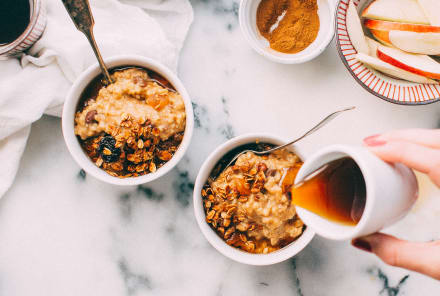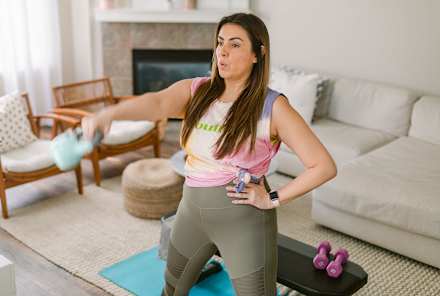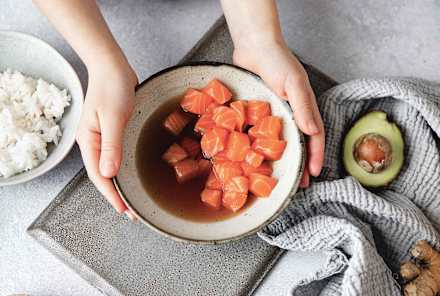Advertisement
Want Better Gut Health? Keep This On Your Kitchen Counter, Says An MD

Eating 30 (or more) plants a week in pursuit of better gut health is a common recommendation from experts, and Tim Spector, M.D., is no exception. As an award-winning microbiome expert, the author of Food for Life: The New Science of Eating Well, and co-founder of ZOE, Spector is used to making complex health research super actionable for those trying to enhance their well-being. This challenge is just one of the simple, yet significant, ways to do so.
On a recent episode of the mindbodygreen podcast, Spector shared one of his personal tips to help you reach 30 plants a week with less effort—a perfect hack for the busy bees out there.
A microbiome expert's hack to eat more plants
Spector starts his day with a dressed-up yogurt bowl that consists of full-fat or Greek yogurt, mixed with kefir for added microbiome support.
Then, in addition to tossing in berries and other miscellaneous fruit he has on hand, Spector reaches for what he calls a food "diversity jar."
Inside this jar, you'll find about 10 different nuts or seeds ready to be used as a topping or snack at any time. "So by breakfast, I've already got about a dozen of my 30 [plants] sorted out."
You can certainly make food diversity jars for other categories—herbs to sprinkle on your salad or rice bowl, pre-roasted vegetables, frozen fruit for smoothies or oatmeal, and so on.
The more you prep, the less you'll have to think about counting up your produce when you're hangry—it's a win-win.
Other tips to get 30+ plants a week
As someone who has personally tried the 30+ plants a week challenge, I feel fairly qualified to give you some additional tips I found useful:
- The one-and-done method: When pulling together your grocery list, prioritize diversity over quantity of the same foods. For example, rather than buying two sweet potatoes for the week, I'd buy just one and pick another vegetable to roast.
- Embrace a diverse range of herbs and spices: If you're struggling to get in 30 plants with just fruit and vegetables, lean on herbs and spices for support. Not only can you add five or six of each to a meal and get almost half of your weekly plants, but you also add a unique flavor to every dish.
- Make your own sauce: Whether it's a cilantro lime drizzle, tahini dressing, or a tangy dill and yogurt dipping sauce, making my own blends was always more fruitful in terms of plant diversity. This also helped me sneak in extra greens or herbs when I wouldn't have used them otherwise.
- Opt for tea blends: Rather than drinking just green tea, I found myself reaching for blends with green tea, black tea, peppermint, chamomile, etc. I highly suggest this so you can count each of the herbs toward your weekly goal.
Not sure the 30 plants challenge is for you? Here, dive deeper into who it's best for and why it's so beneficial for gut health.
The takeaway
To make the 30 plants a week challenge easier, Spector recommends having a "food diversity jar" on hand, filled with nuts and seeds to toss into a yogurt bowl or as a snack. Seeking more low-lift gut support? Consider taking a probiotic supplement—here's a list of our top picks.
Watch Next
Enjoy some of our favorite clips from classes
Enjoy some of our favorite clips from classes
What Is Meditation?
Mindfulness/Spirituality | Light Watkins
Box Breathing
Mindfulness/Spirituality | Gwen Dittmar
What Breathwork Can Address
Mindfulness/Spirituality | Gwen Dittmar
The 8 Limbs of Yoga - What is Asana?
Yoga | Caley Alyssa
Two Standing Postures to Open Up Tight Hips
Yoga | Caley Alyssa
How Plants Can Optimize Athletic Performance
Nutrition | Rich Roll
What to Eat Before a Workout
Nutrition | Rich Roll
How Ayurveda Helps Us Navigate Modern Life
Nutrition | Sahara Rose
Messages About Love & Relationships
Love & Relationships | Esther Perel
Love Languages
Love & Relationships | Esther Perel


















